ABOUT TEMPLE
The most ancient and historically renowned temple “Azhakodi Devi Mahakshethram ”, has its diety in the form of “Bhadrakali” in a calm disposition. The temple consists of seven maternal incarnation-brahamani, maheshwari, kowmari, vaishanavi, vaarahi, indarni and chamundi. A sivalinga is also present.
There is a legend behind this temple, that the samoothiri entrusted six of his generals to the temple “Arikkodikkavu” which is presently renowned as Azhakodi Devi Mahakshethram.

An idol of “Bhavani Devi” was also given by the samoothiri which was gifted to him by the traders of Gujarat. The generals were instructed to place the idol adjacent to the “Bhagavathi Idol” in the “Arikkodikkavu” sreekovil and worship the same.
During the end of lord Krishna’s era, “Dwaraka” was believed to be fully washed away by the sea and it is also believed that the Idol of “Bhavani Devi” was also consumed by the sea along with the rest of “Dwaraka”.
The temple till 1965 known as “Arikkodikkavu” was later renamed as “Azhakodi Devi Mahakshethram”.
During the Malayalam month of “Medom”, Kodiyettem is celebrated on the “Uthrattadi Nakshathram”. Pallivetta is celebrated on the “Thiruvathira Nakshathram”, and “Arrattu” is conducted on the “Punartham Nakshathram”. “Bhagavatha Saptaham” is also conducted every year. The other festivals are “Navarathri Mahotsavam” and “Vijayadasami Pooja”.


This beautiful and glorious temple is situated at Thiruthiyad which is at the heart of the Kozhikode city. This temple is governed by the elected members who are enthusiastic, dedicated in all the functions of the temple .
The Malabar Devaswom Board has a direct access towards the day to day activities of the temple.
All the work undertaken is carried out with quality consiousness and with a sense of obligation to the society.
- Legends
- Mahatmyam
- Administration
Legends
Centuries ago, the site of ‘Azhakodi Devi Mahakshethram’ Is believed to have been an islet bordered by ocean in the west. Soon after the installation of the Devi’s idol the sea is believed to have retreated. Because of its islet form, the region was then called ‘Thuruthnadu’. ‘Thuruthu’ meaning islet and ‘Nadu’ meaning region. But with time, ‘Thuruthunadu’ came to be known as ‘Thiruthiyadu’.
By children are introduced to the written letter with the prayer
‘‘ ഹരി ശ്രീ ഗണപതയേ നമഃ' - 'അവിഘുമസ്തു ശ്രീ ഗുരുഭ്യോ നമഃ ’’
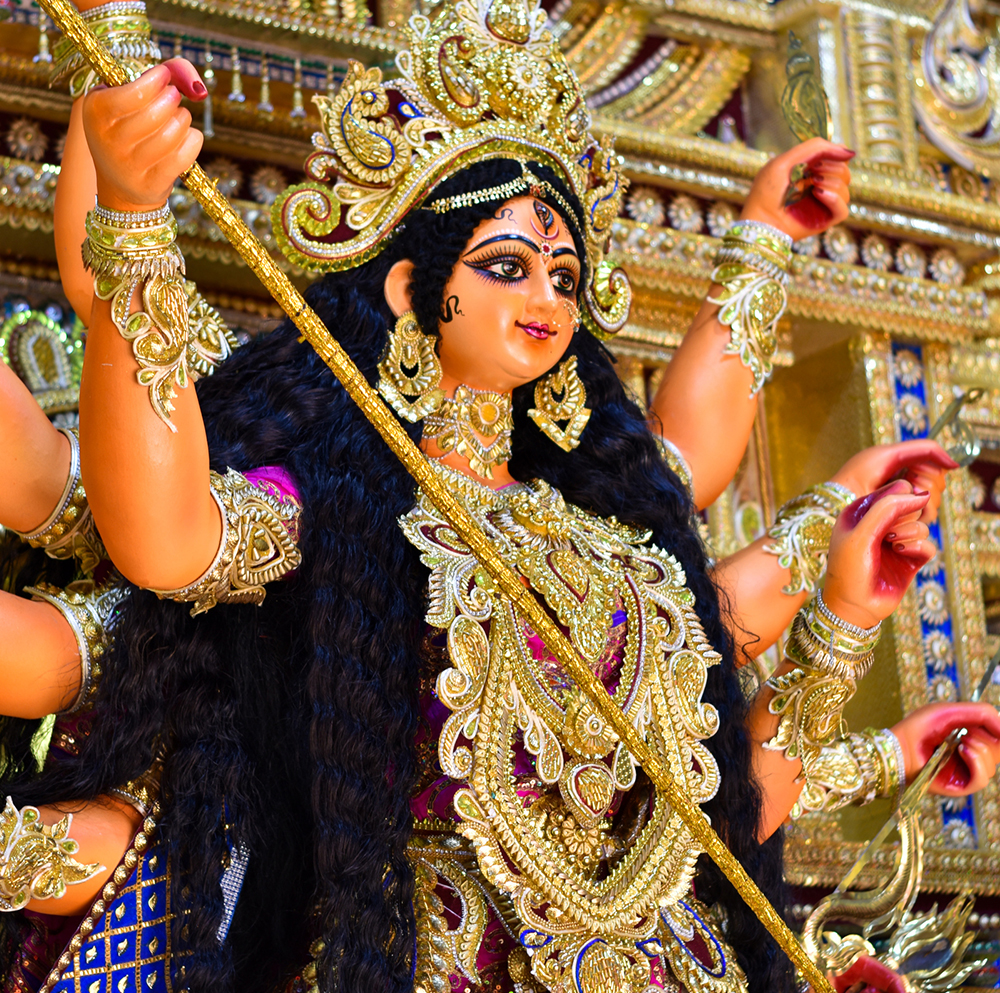
Vidhyarambham
Writing the letter 'Aaaaa' on the tip of the child’s tongue, many seek the blessing of ‘Vidhya Devi’ (The goddess of knowledge). It is indeed a spectacle to see hundreds of children gathered at the temple on the day of ‘Vidhyarambham’ to be initiated into learning.
It is during the full moon phase in the month of ‘Ashwini’ that the ‘Navarathri’ festival is celebrated all over India.
In Bengal the 10 day festival is celebrated as ‘Durga pooja’, while in Karnataka it is celebrated as ‘Dussera’. In kerala it is celebrated as ‘Saraswathi pooja’. The 10th day of the celeberation is marked as Lord Rama’s victory over the demon king ‘Ravana’. This festival is also known as ‘Ayudha Pooja’, meaning the worship of weapons. The 10 day long ‘Saraswathi Pooja’ is celebrated in grant manner every year.
One of the most popular offerings to the goddess at ‘Azhakodi Devi Mahakshethram’ is the ‘Swayamvara Pushpanjali’, offered by young girls of marriageable age.
Young girls, from far & wide, make the offering hoping to win a suitor and thousands will bear testimony to the goddess’s benevolence.
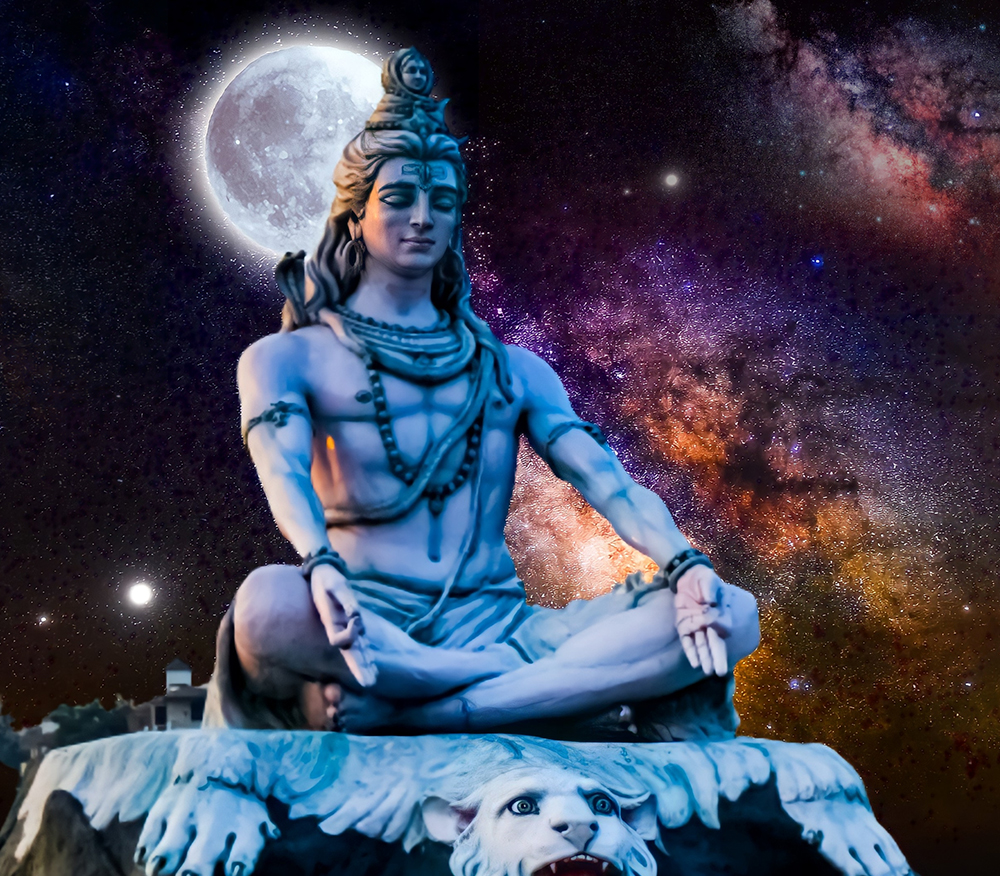
Ancient sculptures have it that the saffron powder, ‘Sindhoor’, on the forehead of the ‘Apsaras’, Urvasi and Menaka and the shimmer of the rubies on the Deva’s crown are caused by the red colour on Devi’s feet. It is believed that when they pay respect to Devi by lying prostrate; touching the Devi’s feet, their forehead or crown touch & take the ‘sindhoor’ from her feet. The ‘sindhoor’ on the forehead of married women symbolizes that they have said their prayers and paid respect to Devi.
Azhakodi Devi Mahakshethram’ is unique because of the fact that it is the only temple in Kerala which has two forms of Devi as the deities.
The idol of lord shiva at ‘Azhakodi Devi Mahakshethram’ symbolizes ‘Anthimahakaalan’ dancing at dusk, while Nataraja symbolizes the rhythmic Thandava danced by Lord Shiva, ‘Anthimahakaalan’ is the sensuous dance performed by him along with goddess ‘Parvathi’.
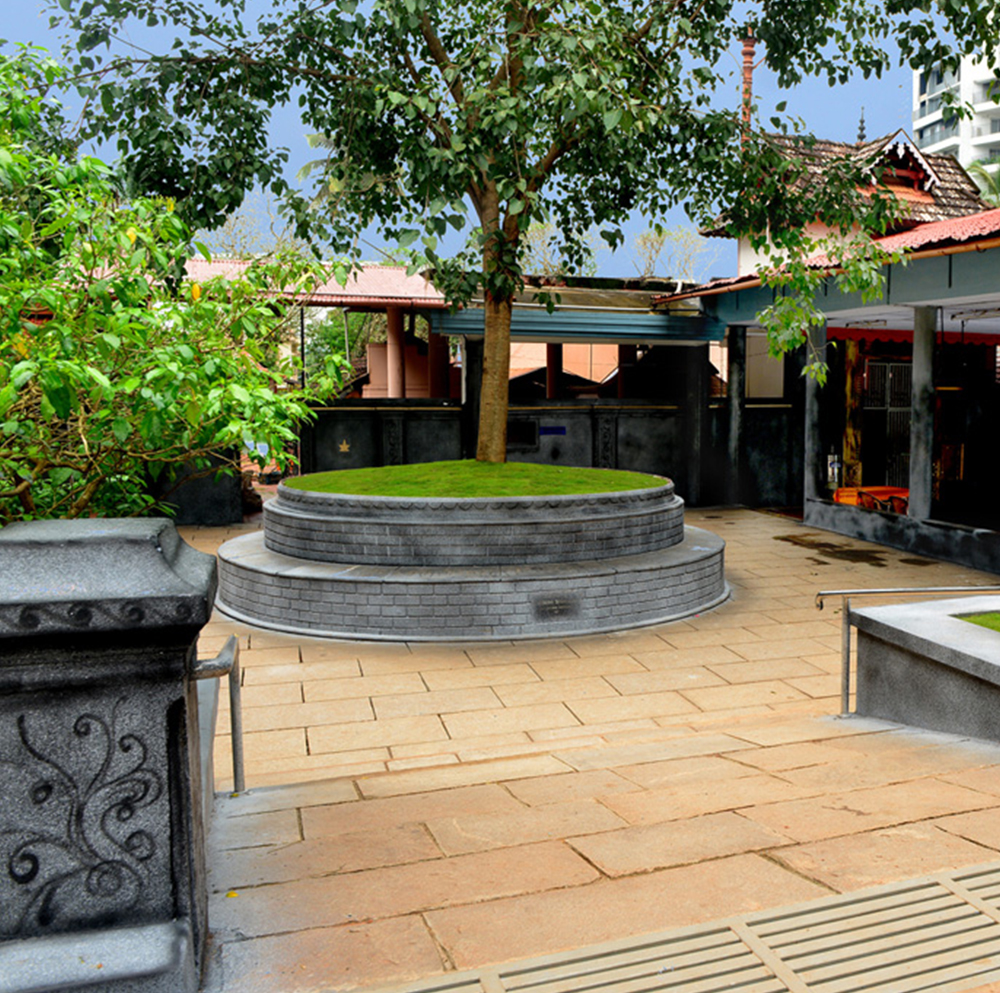
One’s visit to ‘Azhakodi Devi Mahakshethram’ is not considered complete, unless he or she visits the ‘Kizhakkekavu’ (the kavu on the east). This is so because it is believed that ‘Kali’ the goddess who protects us is believed to be the deity at the ‘Kizhakkekavu’.
One of the wonders of ‘Azhakodi Devi Mahakshethram’ was the banayan tree on the eastern side of the main entrance to the temple. On the Banyan tree’s trunk, about six feet above the ground, a palm tree grew, tall and healthy. Together, they used to look like a mother carrying her child on her hip. For years, they remained a great sight for one and all. A wonder indeed!

Legend has it that the east-while ruler of “Kozhikode”, the Samoothiri, gifted six of his generals to the temple “Arikkodikkavu”, which is presently the renowned “Azhakodi Devi Mahakshethram”. The Samoothiri also gave them an Idol of ‘Bavani Devi’, gifted to him by traders from Gujarath.
He instructed his generals to place the idol adjacent to the ‘Baghavathi’ idol in the ‘Arikkodikkavu’ Sreekovil (Sanctum Sanctorium) and worship the same. The ‘Bhavani Devi’s’ Idol was believed to have been consumed by the sea along with the rest of ‘Dhawaraka’ at the end of lord Krishna’s Era. The traders got the idol by chance.
During Tippu Sultan's ‘Padayottam’ the priests of ‘Arikkodikavu’, to safeguard the Idol, are believed to have pulled out the Idol and hidden it in the temple’s tank.
It was a practice during the British rule to try the accused.
‘Arikkodi kavu’ which was known so until 1965, was renamed as ‘Azhakodi Devi Mahakshethram’ with reverence to the suggestion of the renowned historian, writer & researcher, Sri Kizhekkedeth Vasudevan Nair.
Mahatmyam
The presiding diety at ‘Sri Azhakodi Devi Maha Kshethram’ is Devi in the form of ‘Bhadrakali’ in a calm disposition. To her right is goddess ‘Bhuvaneswari’ and to her left are the seven maternal incarnations’ Brahmani, Maaheshwari, Kowmari, Vaishnavi, Vaarahi, Indrani and Chamundi. A sivalinga too is pressent.
The moolamantra of Sri Azhakodi Devi Maha Kshethram
‘‘ ഘലഗം കപാലം തൃഷ്യം ച ഖേദം
ഭുജൈർധനം ശിശുചന്ദ്രഭൂഷം
ഭുജംഗ മൈർ ഭൂഷിതകാന്തേദേചാം
കലീം നവാം’ ഭോദനിഭം നമാമി ’’
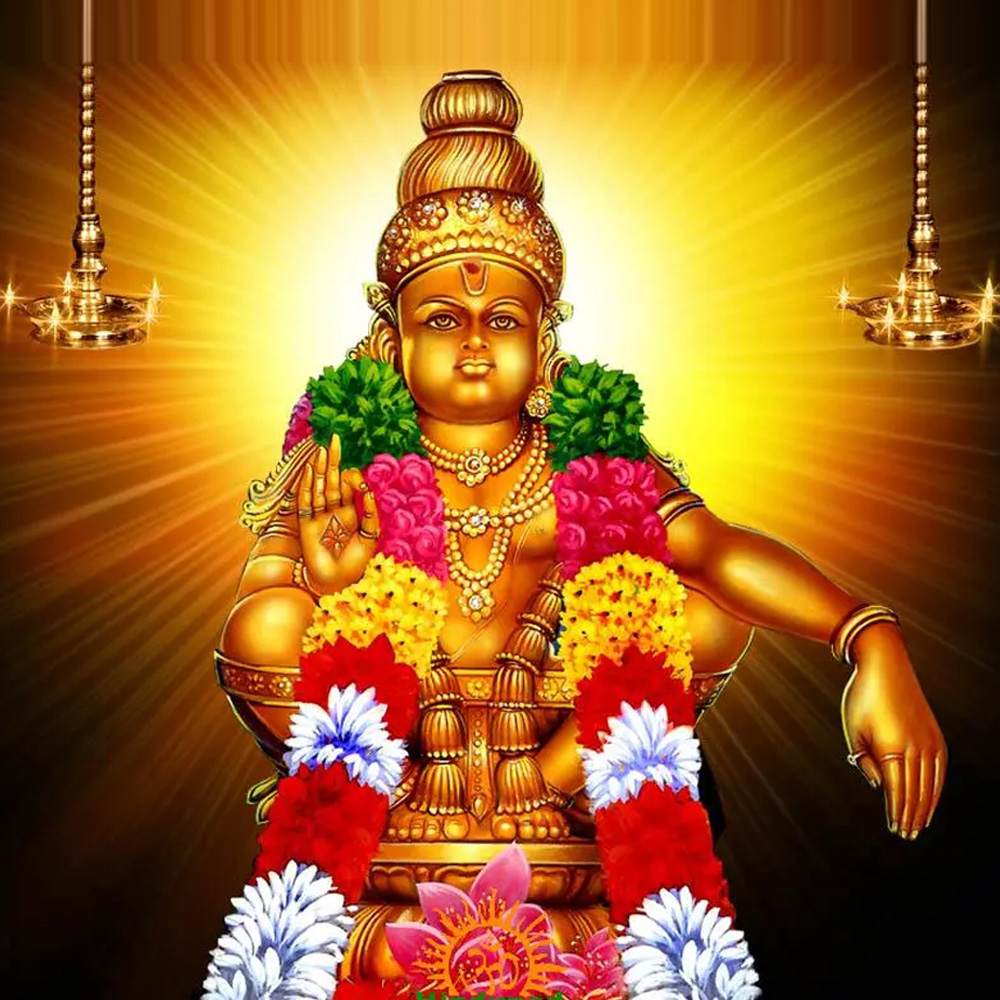
Shastha
Lord ‘Shastha’ along with his wife ‘Prabha’, son ‘Sathyakan’ and decorated in red is the diety here. To his right is ‘Dhakshinamurthi’ and to his left is the elephant god, ‘Ganapathi’.
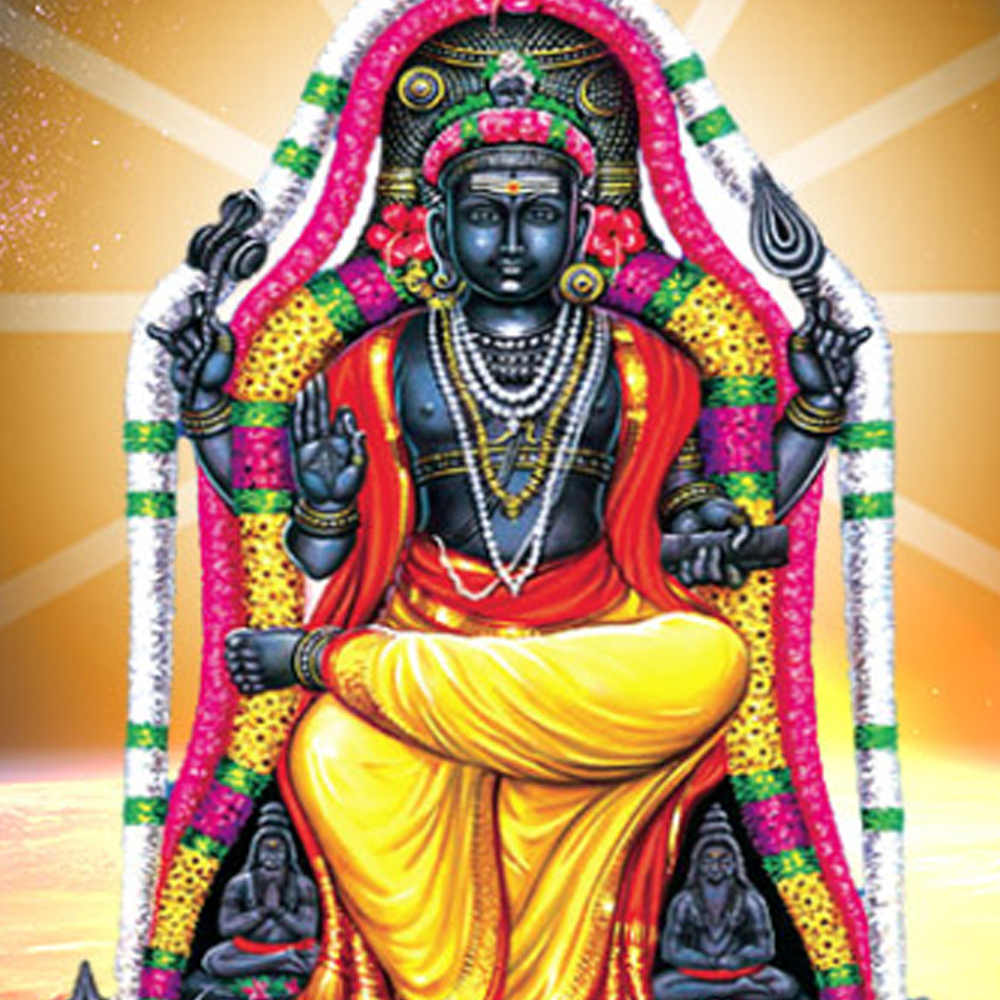
Meditating lord Dhakshinamurthi
Having lost his wife ‘Sati’ in ‘Dhakshayaga’ lord ‘Shiva’ meditated. Dhakshinamurthi is the meditative form of Lord Shiva.
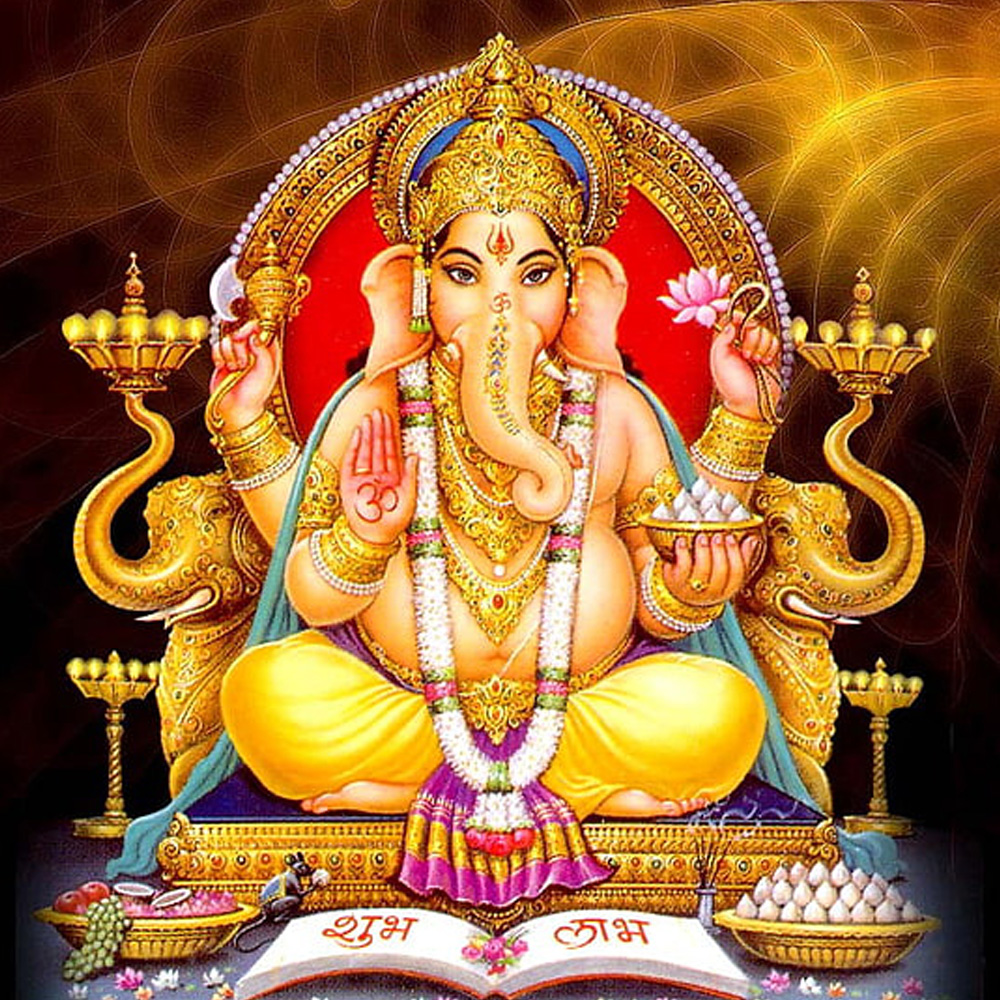
Ganapathi
‘Ganapathi’ is the son of lord ‘Shiva’ and ‘Parvathi’. His Idols are present at the Agnikone of the Devi’s shrine and also adjacent to that of lord ‘Shastha’.

Unnithripurandakan
‘Thripuras’, the demons, pleased lord ‘Shiva’ and gained powers that made them unconquerable. When they started abusing their mighty powers, lord ‘Shiva’ through his third eye gave form to an incarnation that reduced the ‘Tripuras’ to ashes. This incarnation of lord ‘Shiva’, ‘Unnithripurandakan’ presides here.
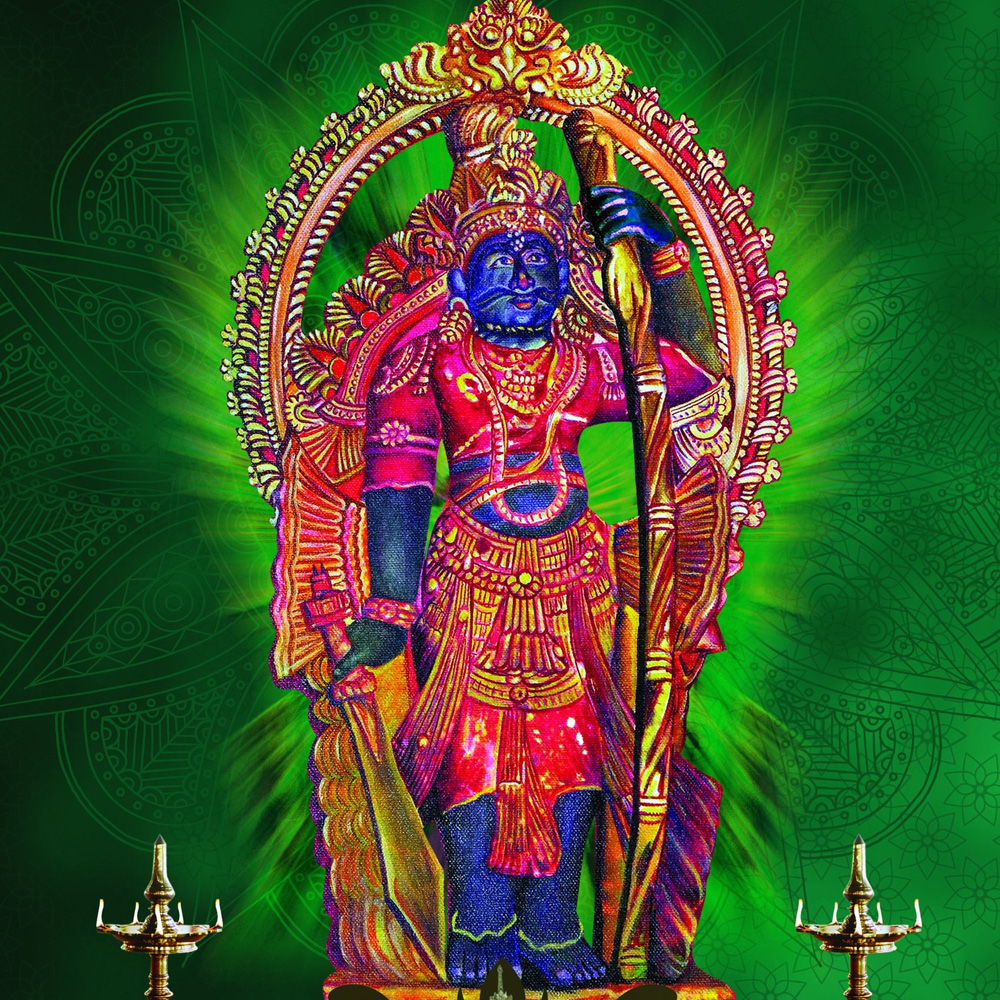
Anthimahakalan
Lord ‘Shiva’, posing as a dancer at dusk is known as ‘Anthimahakalan’.

Sreekrishna
The child of ‘Devaki’ and ‘Vasudeva’ in his ‘Venugopala’ form (the cowherd who carries a flute) is the deity here. ‘Ashtamirohini’ and guruvayoor Ekadesi are observed here.

Kizhakkekavu
‘Kizhakkekavu’ (the kavu on the east) houses ‘Kali’ the goddess who protects us is believed to be the deity at the ‘Kizhakkekavu’.
SRI PRADEEPKUMAR C S
Trustee Board Chairman
SRI SANTHOSHKUMAR K
Trustee Board Member
SRI DINESHKUMAR E
Trustee Board Member
SRI N SATHEESH KUMAR
Executive officer



